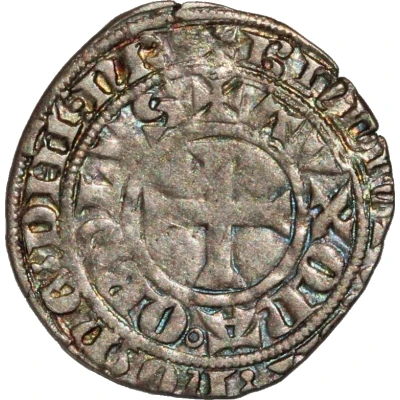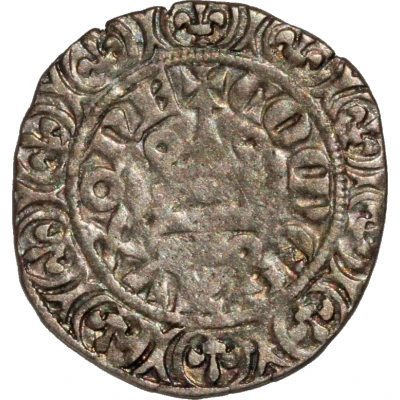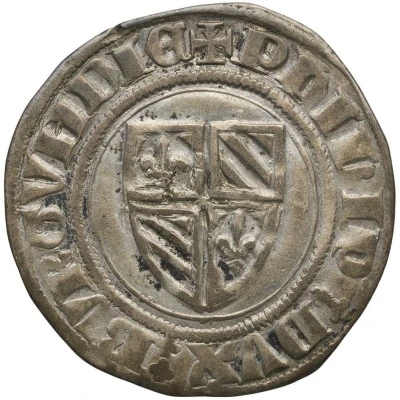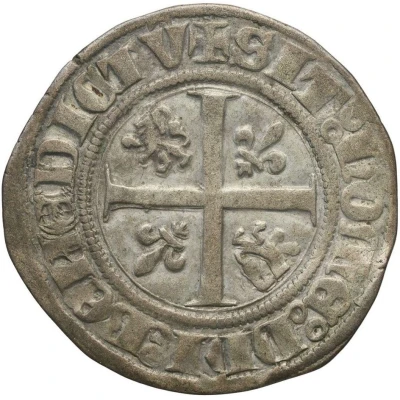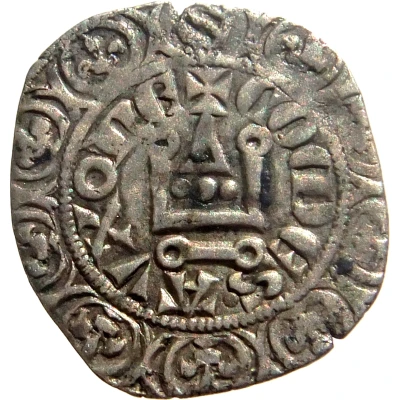
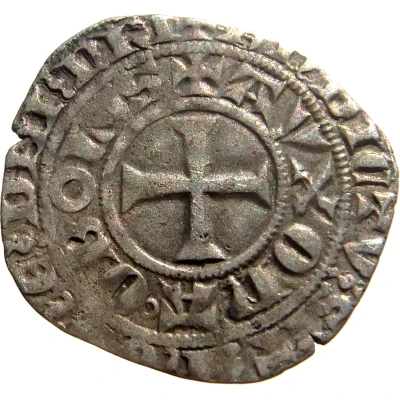

© Charles Travaillant
½ Groschen - Odo IV shield of Burgundy ND
| Billon (Ag .700-.800) | 1.68 g | 22 mm |
| Issuer | Duchy of Burgundy (French States) |
|---|---|
| Duke | Odo IV (1315-1349) |
| Type | Standard circulation coin |
| Years | 1327-1330 |
| Value | ½ Groschen (1⁄40) |
| Currency | Livre |
| Composition | Billon (Ag .700-.800) |
| Weight | 1.68 g |
| Diameter | 22 mm |
| Shape | Round (irregular) |
| Technique | Hammered |
| Orientation | Variable alignment ↺ |
| Demonetized | Yes |
| Updated | 2024-10-04 |
| Numista | N#165066 |
|---|---|
| Rarity index | 97% |
Reverse
Cross.
Script: Latin
Lettering:
+ BNDICTV ⋮ SIT ⋮ NOME ⋮ DNI ⋮ NRI
+ AVXONA ᴗ OBOLVS
Unabridged legend:
Benedictum sit nomen domini nostri
Auxona Obolus
Translation:
Blessed be the name of our lord.
Coin of Auxonne.
Comment
"One might hesitate to attribute these meshes to Eudes IV rather than to Philippe de Rouvres, contemporary of Jean le Bon. But the royal links issued under the reign of Jean le Bon have a border of eleven lilies; from 1351, their title is lowered to 369 ‰; their theoretical weight of 1.69 g is not reached by any of the examples found. The legend corresponds to the arguments opposed by the Duke to the monks of Saint-Bénigne before 1329: non ponitur nomen ducis sed ibi dignitas comitis. These issues date from the years 1327-1330."Françoise Dumas-Dubourg, Le Monnayage des ducs de Bourgogne, Louvain-la-Neuve, 1988, p.286
Interesting fact
One interesting fact about this coin is that it was issued during the reign of Odo IV, who was the Duke of Burgundy from 1315 to 1330. During his reign, he sought to strengthen the duchy's economy and military, and the issuance of this coin was likely a part of those efforts. The coin's design features the shield of Burgundy, which was a symbol of the duchy's power and influence. Additionally, the use of billon, a silver-copper alloy, was a common practice during this time period, as it was a more affordable alternative to pure silver.
